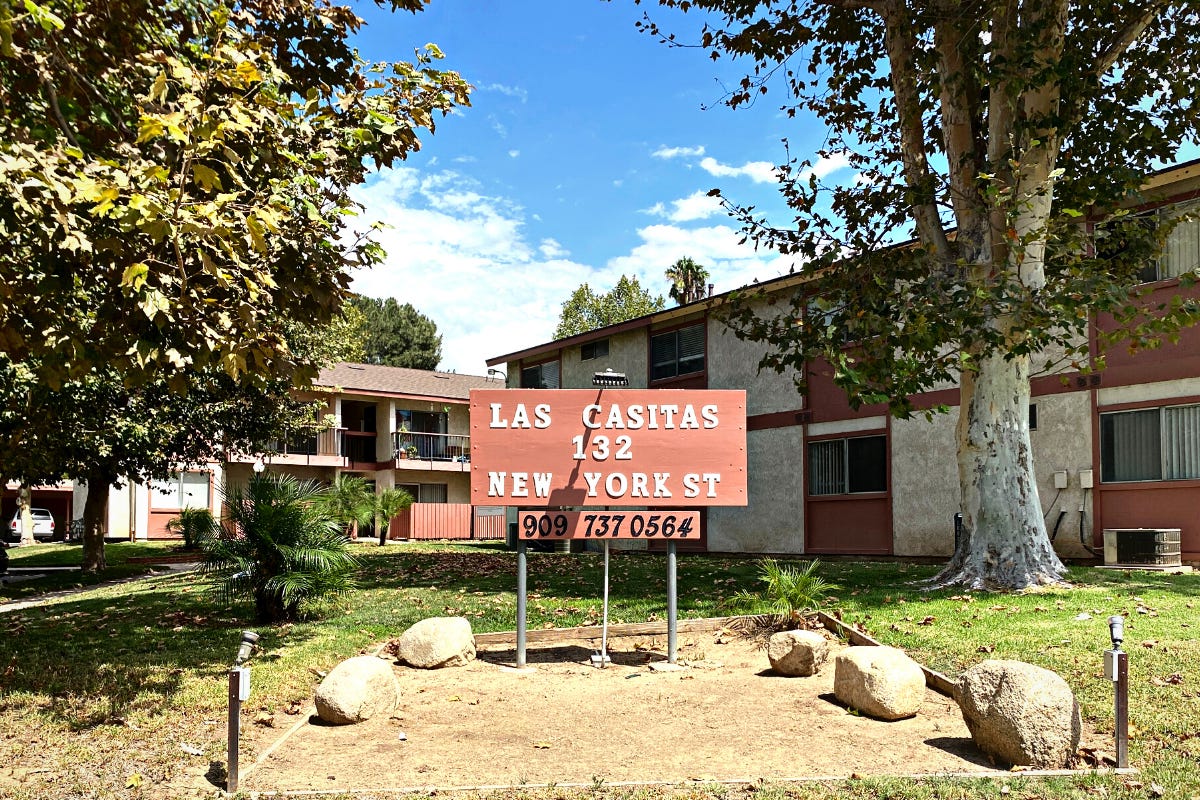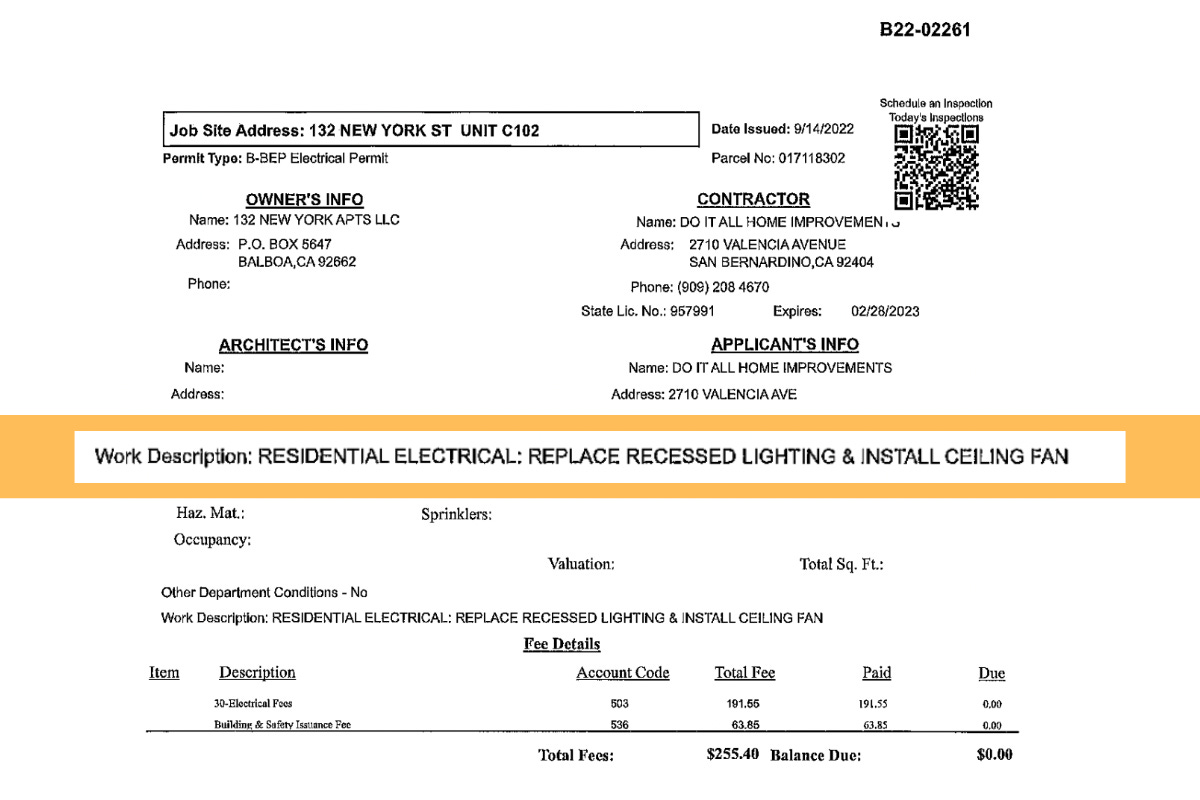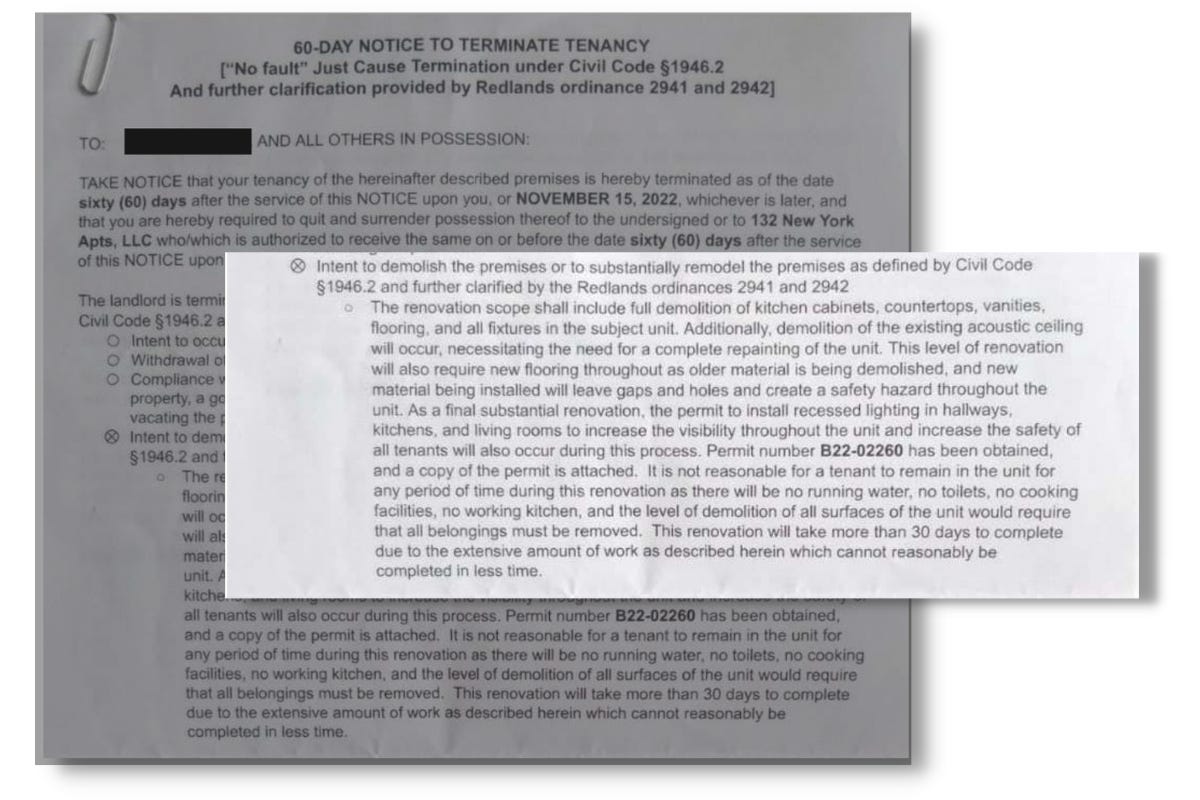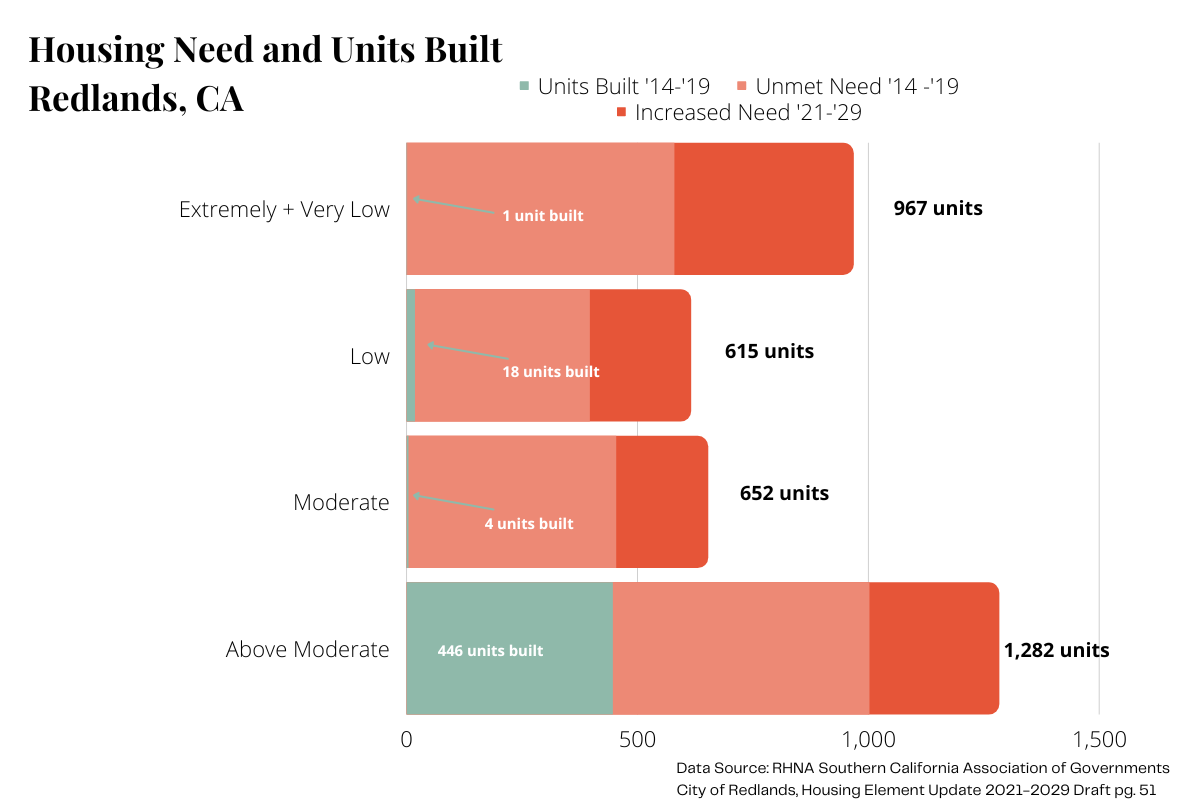What’s on the Redlands Unified school board agenda for July 8, 2025
Agenda includes updates to library materials complaint procedures, approval of a new flag display policy and contract negotiations.
It's been 6 months since City Council acted to protect residents who receive renovation-based eviction notices. Read what happened next and what more is being done to improve protections for renters.

REDLANDS, Calif - Feelings of shock, turned to anger and then a sense of helplessness for Redlands resident, Tarun, after he and his family received a no-fault eviction notice last summer. After 9 years of renting the same unit at the Las Casitas Apartments in Redlands, Tarun and his family were told things were about to change.
“Our whole life was in that apartment. It’s where we first lived when we got married. Where we brought our son home. It’s been our community all these years.”
Between June and July of 2022, dozens of tenants at Las Casitas Apartments were advised to vacate their units within 30 days so that a “substantial remodel” could be completed. We reported on it here.

Tarun said he and other residents tried to figure out why this was happening to them and what legal recourse they had.
California law allows landlords to issue no-fault evicts in order to demolish or to “substantially remodel” their property. To be considered substantial, renovations must be so extensive (think plumbing, electrical, structural) that a permit is required, the work would take more than 30 days and it would be unsafe for the tenant to remain in the unit. According to state law cosmetic improvements alone, such as painting or minor repairs, or other work that can be safely performed with the tenant in place do not qualify as “substantial.”
The tenants were told they could remain at the apartment complex by transferring to a new unit at the new market price rent of $1950 - $2350 per month.
A nearly 60% increase from their current rental prices left residents scrambling to figure out what to do.
“The pace of it was unbearable,” Tarun recalled, “if this happened gradually, you prepare for it. We just got hit with it and we had to figure it out.”
Tarun, a Product Engineer, said he was in a better position than most to adjust to increasing rent. “I am working so I can figure out how to make this happen. But other people on fixed incomes have no way. Older people who are not making any income - what’s going to happen to them?”
In particular, he worried about one elderly neighbor who suffered from memory issues and lives on a fixed income.
“People who had a safe home over their head and when this lightning struck they had no way to figure this out financially. And that leads to homelessness. It adds up. This is how society gets deteriorated in the process of others getting richer.”

Tarun and other residents took their concerns to City Council claiming the renovations planned were not “substantial.”
In a letter to City Council, the property owner Doug Wetton Investments argued the renovations were necessary and substantial to make their investment “viable” stating, “We know this is not an ideal scenario for all parties, but the unfortunate fact is that this is not subsidized housing, and tenants have been paying $600-$1000+ below market rents for a long period of time.”
By early August, an emergency ordinance passed City Council 4-1 to give residents who received no-fault eviction notices for renovations more time to figure out where to live and relocation assistance.
The ordinance, modeled after other California cities, provided more guidance to property owners regarding what constitutes a substantial remodel, as well as new requirements to obtain necessary permits prior to issuing eviction notices.
Also, the property owner must explain why the work cannot be completed in 30 days and why it is unreasonable for the tenant to keep living in the unit during that time.
In addition, the new ordinance requires property owners to pay tenants relocation costs of two months of rent or $4,500, whichever is greater. The payment is given in two parts - $3,000 within 15 days of the eviction notice and the additional $1,500 upon move out.
While the ordinance bought more time for residents, it did not save them from a new round of eviction notices that came in September. This time with permits and a more detailed explanation of the extent of the renovations.
Between July 25 and Nov 10, 2022, there were 15 electrical permits pulled for Las Casitas Apartments at 132 New York St.
The scope of work listed on the permits includes the installation or replacement of recessed lighting and ceiling fans.

In addition to receiving a copy of one of these permits, Tarun received a new eviction notice dated Sept 15 outlining the remodel plans to include the replacement of cabinets, flooring, light fixtures, and acoustic ceiling. The eviction notice stated it would be unsafe for the tenant to remain in the unit during the remodel and the that the work would take more than 30 days.

It was around the same time that Tarun realized this was the end of the journey for his family at Las Casitas. He opened up about the financial and emotional stress of an unexpected move and an uprooted community.
He and his family have had to cut back in other places to make up for the unexpected expenses of application fees, deposits, upfront rent, fees for transferring utilities and internet, and the cost of movers.
“One thing I’ve learned through this process is if you’ve found housing in the past there’s no guarantee you’ll find housing in the future.”
In addition to the uncertainty of when and where a new apartment application would be accepted, he worried about finding a home close to their child’s school, and the emotional impact of losing their community.
He described Las Casitas as a place where he knew his neighbors and his son could play freely. A type of support system that can’t be quantified and is not easily replaced. He says where he lives now there are no kids around. His son recently asked to return to the complex to play but said it was a sad and lonely place since most of their former neighbors have left.
Tarun said he’s grateful to City Council for what they did in passing the ordinance. “A miracle did happen due to the ordinance - we were given a little more time and resources. Instead of being uprooted right away, it gave us a couple of months to make this transition less painful.”
Tarun and his family eventually found housing in Redlands and were able to keep their son at his school. But he said other residents were not as fortunate.
Even after leaving it all behind, Tarun wishes more could have been done from a legal perspective. He and other residents who spoke at City Council did not believe the remodel qualified as substantial nor did he think it was necessary to vacate after he observed units being flipped within two weeks.
However, having a family and concerns over finding housing, he was not in a position to file a civil lawsuit against the property owner.
Because of the way the policy is written, it is up to tenants to secure and pay for legal aid to fight their cases. The cost of legal aid prohibits most tenants from even knowing if they have a case.
“These are drawn-out processes,” he recalled, “just getting a demand letter would cost me $750 - $1,000 and there’s no guarantee of a response.”
The next steps would involve gathering evidence against the property owner and making a case. All this adds up to a higher bill. “No one has that kind of money when you’re just saving for rent,” Tarun explained.
Redlands City Council Member Jenna Guzman-Lowery, who visited with residents at Las Casitas in the months following the emergency ordinance, agreed the lack of legal aid available to the residents was troubling.
“As I was looking for support and in reaching out to lawyers and advocacy groups to help the residents, I found the safety nets for these types of situations are still being created,” Guzman-Lowery recalled.
Even in her role as an elected official, she said she felt powerless to help residents facing no-fault evictions and is concerned that current public policy isn’t able to protect tenants well enough.
Guzman-Lowery saw the situation at Las Casitas as an example of property owners taking advantage of the vulnerability and desperation that comes with needing housing and having limited resources.
“Among people with power, there's an understanding if you just keep pushing on people who are desperate - in need of housing, food, healthcare - those people are going to break eventually. And they bank on that,” said Guzman-Lowery.
In addition to limited resources and access to legal aid, a lack of education and understanding of their rights put the tenants at a disadvantage.
What happened to tenants at Las Casitas Apartments is not new and according to local housing advocates, it happens too often.
“It’s an old tactic. It’s as old as landlords. When rents go up, there are usually protections for people who live in there so you need the people out. It’s gentrification - that’s what they’re doing,” according to Jeff Green, Associate Director of The Inland Equity Community Land Trust.

As the number of renters increases across the region, a local housing advocacy group is working to create an Inland Empire Tenants Union to help residents understand and advocate for their rights.
Maribel Nuñez, Executive Director at the Inland Equity Community Land Trust, said people get confused over certain notices thinking they are legal documents when they’re not. That’s where the Union comes in, “We train and work with members so we can focus on the prevention side because when people don’t know their rights they get scared.”
Both Nuñez and Green were not surprised to hear that residents in Las Casitas struggled to find legal aid.
“It’s very difficult - even if you have money there are very few attorneys who will represent tenants in the IE. We have some success with a firm in Orange County, but they aren’t taking any more cases right now,” said Green.
To fill this gap in education and legal support, the group is focused on prevention and working through understanding the book, California Renter’s Rights.
The Union would also help tenants in disputes with property owners over repairs and maintenance. In a recent case, the group helped residents by calling on a city’s code enforcement to force the property owner to take action over trash collection and general disrepair.
Green described an escrow account that could be created by the union where members pay in and if there are repairs not being made by the property owner, the tenants would have a resource to improve their living conditions. “This is an example of how we’re taking group action to fight back against slumlords,” explained Green.
According to Nuñez, prevention and education are key, “We want to be able to move things along quicker. The Union is a way to be more proactive and not wait until things are bad.”
In the case of Las Casitas Apartments, Nuñez believes more could have been done earlier to help the residents fight the eviction and stay longer.
“We found out a little bit too late to help them. The Union would help us be there when things are happening so the tenants know their rights and don’t get into these situations. A lot of people just don’t know about their rights.”
I asked Tarun his thoughts on a tenants union, and he said would be interested in learning more:
“When you're out of resources, education is a resource. I would want to go into a conversation knowing my rights and what’s going on.”
More information on the Tenants Union.
The rise in rent and lack of affordable housing in Redlands also makes situations like renovation-based evictions even more challenging for residents.
Rental prices in Redlands for a 1-bedroom apartment have nearly doubled since 2014 according to data from Zumper.
According to the most recent Housing Element Update, the median gross rent in Redlands is rising at a faster rate than surrounding cities.

Not only are affordable housing units being lost to new investments, but housing for low-income households is not being built.
The need for low-income housing in Redlands is rising at a higher rate than for higher-income housing. Yet in the last housing cycle, only 19% of the projected housing need was met. The vast majority of units were built for the above-moderate income category.
This graph shows the breakdown of units built, unmet needs, and increased needs across income levels.

In an effort to address the need for affordable housing, the City has proposed initiatives in the Housing Element Update 2021-2029.
Programs include identifying funding and easing permitting for developers, as well as allowing affordable housing to be built on school and church property.
Other programs include the promotion of accessory dwelling units and a study into inclusionary housing policy.
(You can read more details in our report here.)
As development continues to move forward in Redlands, so does the risk of residents being displaced. However, there are ways to help the community grow together.
Residents can advocate for changes to state and local public policy to provide stronger protection and recourse for renters who receive no-fault evictions.
In addition, the city’s efforts to increase and support affordable housing will allow residents who are displaced by rising rent prices to remain in the community.
Finally, education and access to legal aid are important components in helping residents rent know their rights, and remain housed.
Tarun told me things are better now that he’s found housing again but that the situation changed his life and perspective, “I’ve always heard the stories of communities impacted by something like this. Now I know what it feels like.”
Sign up for our weekly newsletter